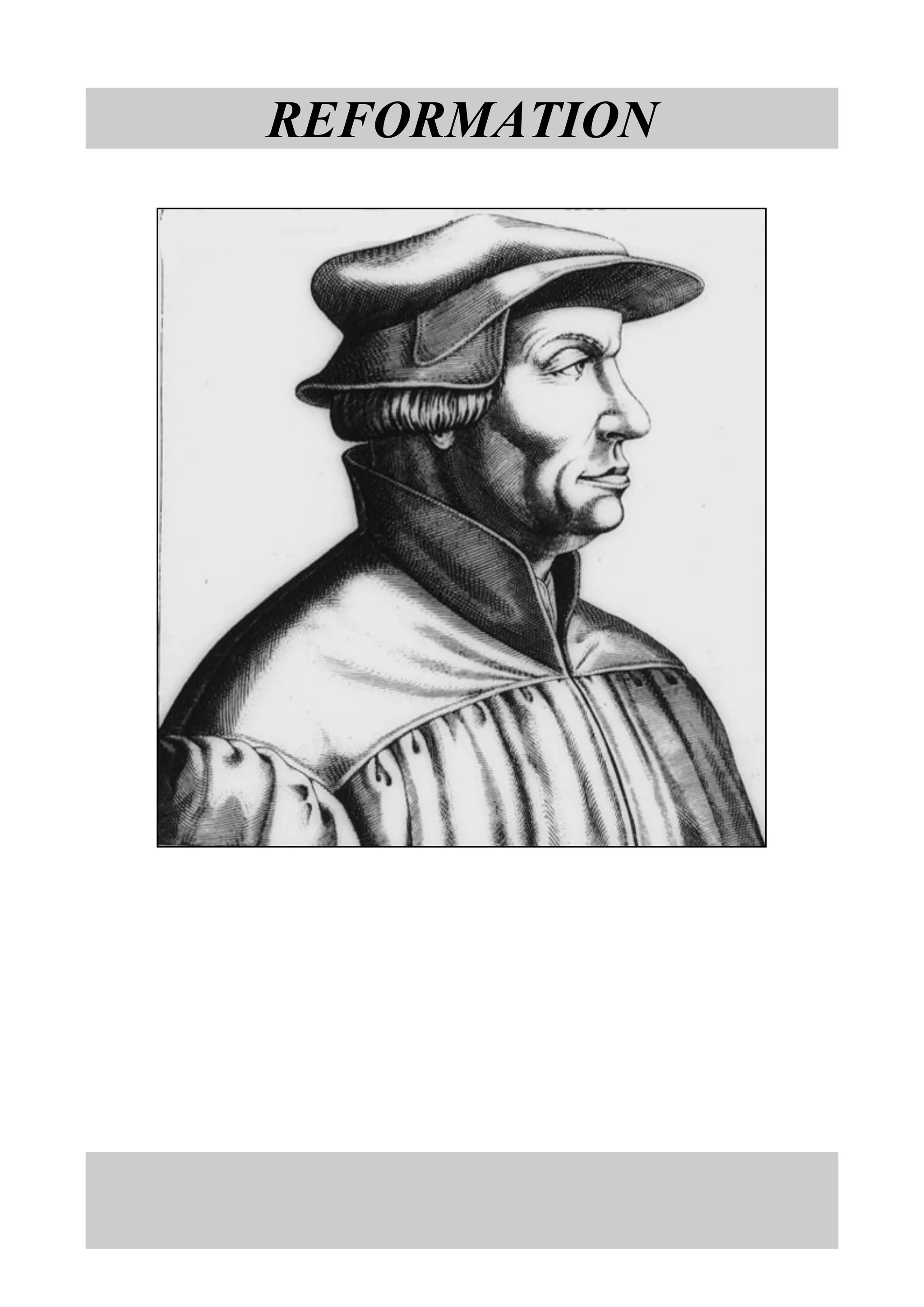Martin Luther initiated the Protestant Reformation in 1517 by nailing his 95 Theses to a church door in Wittenberg, criticizing Catholic Church practices like selling indulgences. This launched decades of religious conflict across Europe as Protestantism spread. John Calvin furthered the Reformation by establishing a theocracy in Geneva with beliefs like predestination and rejection of transubstantiation. In England, King Henry VIII broke with Rome in 1534 to annul his marriage and established the Church of England with himself as its head, though doctrine remained Catholic. During Edward VI's reign, Protestant reforms through the Book of Common Prayer moved England closer to Calvinism. Mary I returned England to Catholicism and persecuted Protestants, earning








